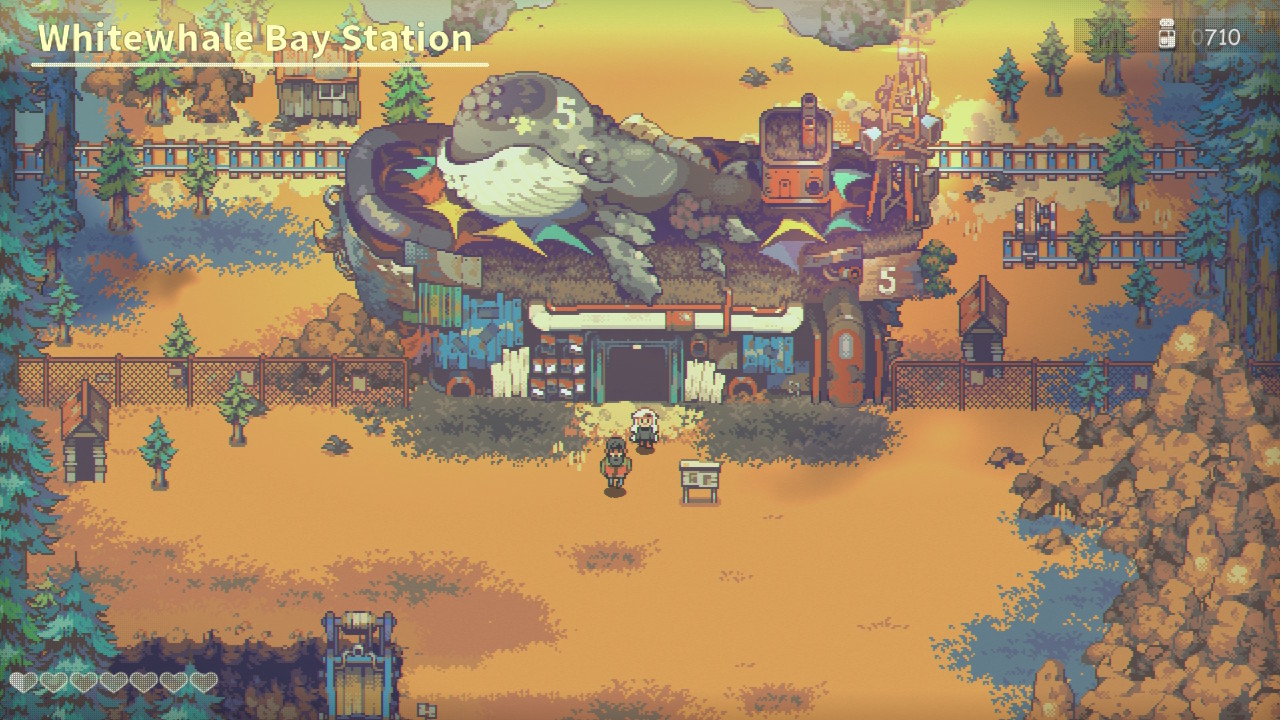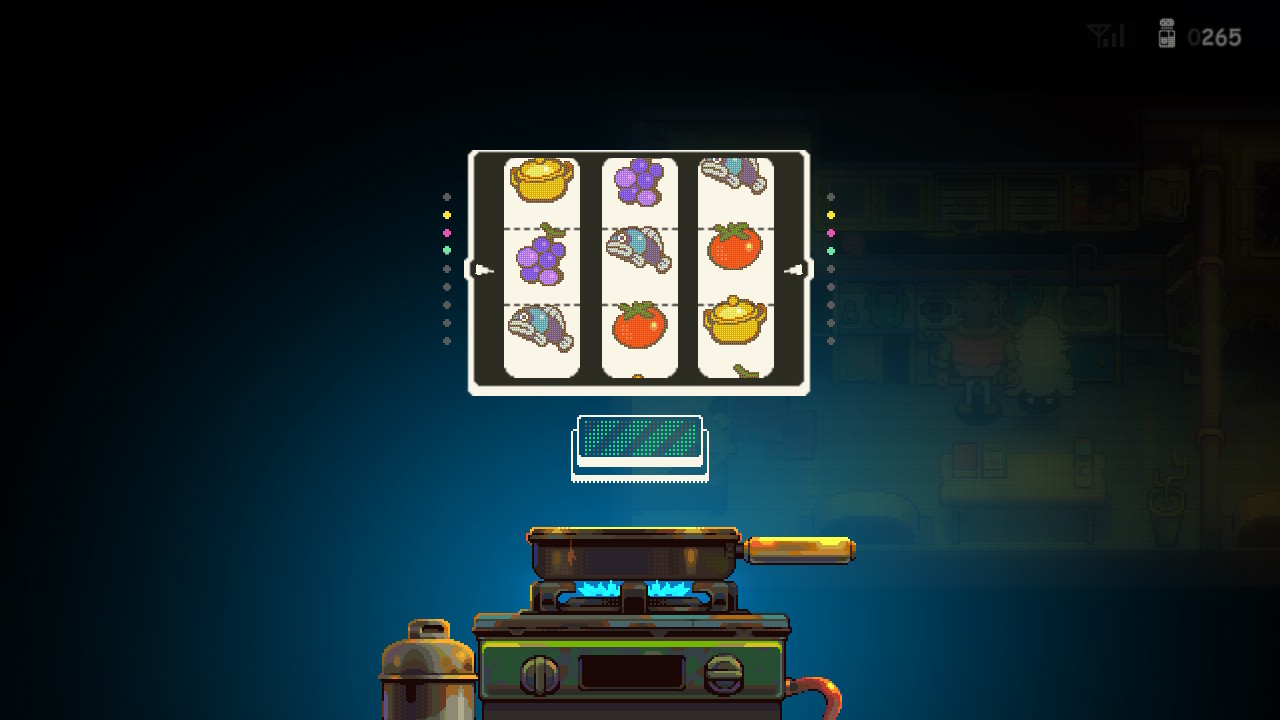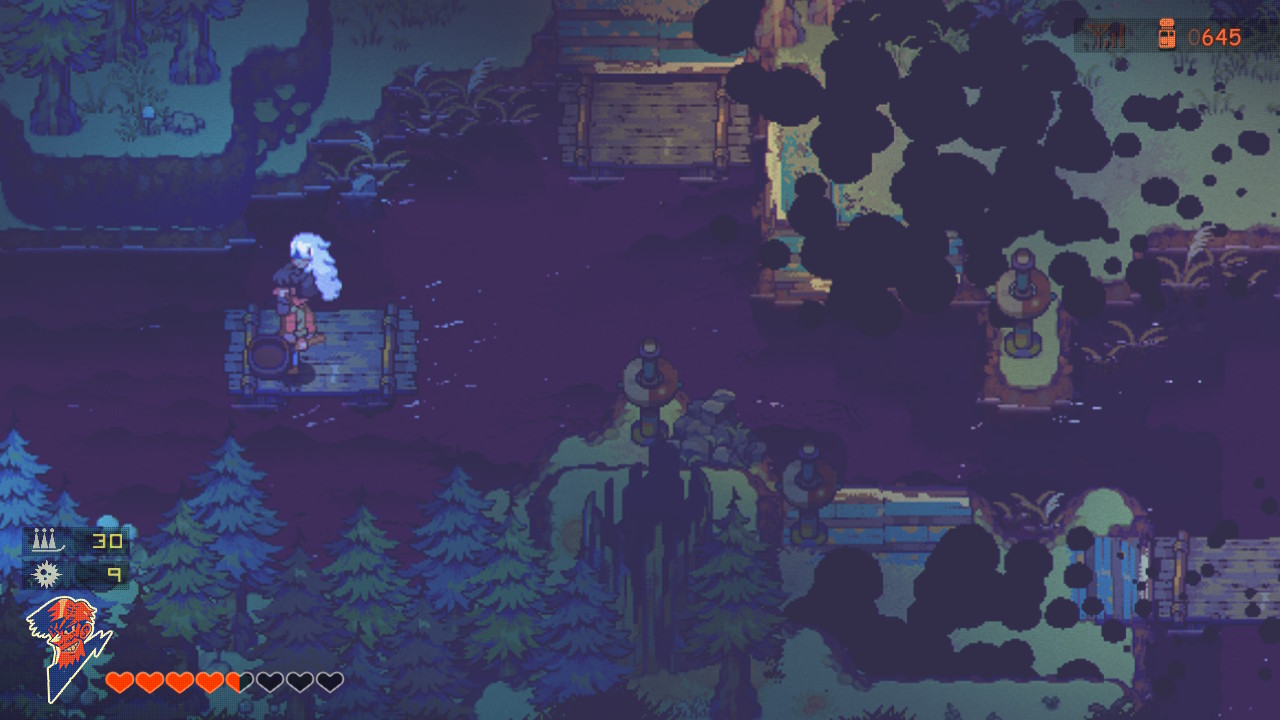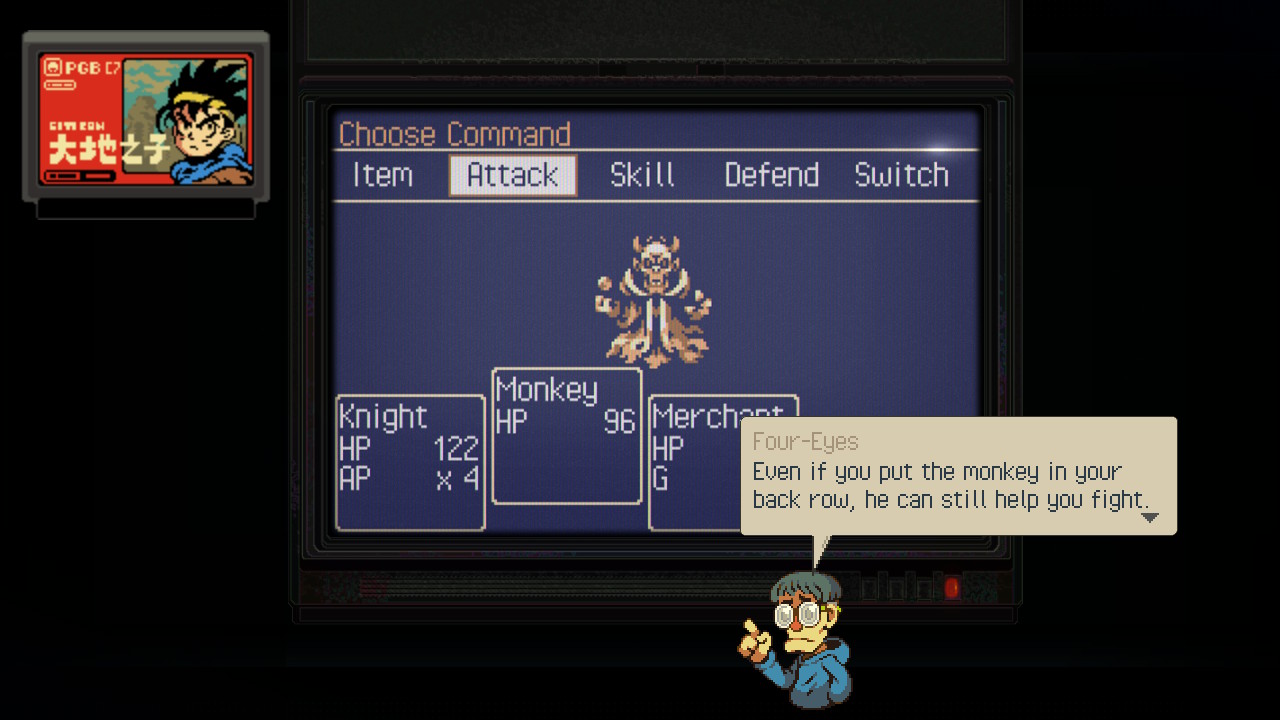Eastward, developed by Pixpil, joins the mythos of quirky games inspired by the likes of EarthBound, Moon, and Undertale, but it would be doing Eastward a disservice to call it just another wacky indie game. Through its surprisingly beefy playtime (30-40 hours), Eastward establishes a strong identity and is sure to become a classic in its own right.
Eastward sets off to a leisurely start as you meander your way through several days in the underground society of Potrock Isle. John, a local digger and one of two player characters, faces simple struggles like going to work and getting his adopted daughter Sam (she has psychic powers) accepted into school, even if he has to tackle a few dungeons along the way. At first, only the briefest of moments scratch beneath the surface and hint at what Eastward has in store. While these moments do a lot to set the stage, I could easily see the sluggish early pace as a turn-off, which is a shame because once Eastward gets good, it gets really good. By the time the second chapter ends, Eastward reveals itself; beneath its quirky charm and dark humour lurks the atmosphere of a horror game. Things are not right in the hostile world of Eastward.
As the title would suggest, you head ever further east during your time, hitching a ride on the railroad. Each new stop features a striking new location and a new temporary career for John and Sam, as well as a colourful cast of locals to get to know. It isn’t uncommon for dialogue with the townsfolk to be laugh-out-loud funny or outrageous, but even when it isn’t, it still tends to prompt a smile…except when the game wants you to hurt. It knows how to do that just fine. Sometimes it feels a group of townsfolk could use more screen-time than they get, while other times, it feels a town outstays its welcome even though each is memorable and charming enough to be worth experiencing personally. The couple Alva and Isabel (also known as Izzy, so I might be biased) deserve special mention: they are just wonderful to interact with. One of my favourite touches in exploring the world is the save system. Each save point is a talking refrigerator that offers commentary on memories (often food- or cold-related). I always looked forward to the next save point so I could see what the fridge had to say.

The pixel artistry on display in Eastward is quite astounding. There are a vast number of unique character sprites with their own detailed animations. The world, a gorgeous mix of encroaching nature and run-down civilization, is a sight to behold. Frequent use of the foreground and background adds real depth to the homes you visit and the ruins you plunder. Eastward’s potent atmosphere mixes beauty, melancholy, and horror in equal measure and is emphasized by a delightfully crunchy soundtrack reminiscent of the Sega Genesis. The monsters you face can be both adorable and menacing, but neither feels tonally inconsistent.
While Eastward pays a lot of respect to Earthbound, it takes far more cues from Nintendo’s The Legend of Zelda games and their series of handheld Mario & Luigi RPGs when it comes to gameplay. Like 2D Zelda titles, Eastward is a top-down game with real-time combat and focused on puzzle dungeons. There are even monster rooms where you have to defeat all enemies to proceed. Also like Zelda, you collect heart containers and heart pieces to increase your health, alongside an array of useful items and powers to solve puzzles and deal death to your foes. Eastward, likewise, has a cooking system inspired by Breath of the Wild, including many recipes offering a temporary boost to maximum health.

What really makes Eastward shine, though, is its similarities to the aforementioned Mario & Luigi RPGs. You control both John and Sam for most of the game, and you can switch who is leading with the press of a button. You can only utilize the lead character’s abilities at a given time but, because the swap is so fast, this isn’t so much a limitation as it is a feature. Both John and Sam are essential for combat and puzzle solving but are clearly more capable of one over the other. John’s array of weaponry makes him a dangerous combatant, while Sam’s psychic powers and small stature lend her an exploration focus. Of course, using them both in unison is the key to victory. Why try to brute force an enemy as John when you could use Sam to stun it and prevent a counterattack then proceed to safely whack it to death with your trusty frying pan?
Solving puzzles is the clear star of Eastward’s gameplay sections, as combat is a quick, simple affair with fun but predictable enemies. However, the game works so well because of how it balances all pillars of its gameplay. Some of Eastward’s most rewarding and fascinating sequences come when John and Sam are forced to split up. Perhaps they end up on either side of a wall or river, or there is a tunnel too small for John to squeeze through — whatever the case, you now have to swap back and forth between the father-daughter duo, solving puzzles and battling enemies to help each other make it through until they can meet up again.

I would be remiss if I failed to mention the turn-based, roguelike RPG contained within Eastward known as Earth Born — yes, really. In each town, you can find a TV with a suspiciously Dreamcast-looking game console hooked up to it. Once you have a memory card, you can start playing Earth Born on these TVs. Despite its name, Earth Born has more in common with a classic Dragon Quest game than Earthbound. You have seven days within the game to defeat the Demon Lord and rescue the Princess. You will fail, at least the first few times. However, any fast travel points or party members you unlock during these seven days carry over to your next attempt. To aid you in your quest to defeat the Demon Lord, you may use capsule machines within Eastward to obtain statues. Through amiibo-like functionality, these statues give you powerful items usable in Earth Born that refresh on each new playthrough. It’s a fun little side quest that isn’t too hard to beat and acts as a good palate cleanser between dungeons in Sam and John’s world.
Enjoying Eastward is no trouble at all, and I had very few problems with the game. Still, there are a few nits to be picked. As mentioned previously, the prologue and first chapter of the game are slow and light on intrigue, and for me, it took quite a bit of time to break through that initial impression. While they lessen, problems with pacing do persist, and it is not uncommon for Eastward to require you to trek across a map only to tell you to return from whence you came or to repeat the same task multiple times. These moments are exacerbated when you must walk instead of run, slowing your speed to a painful crawl. While any tedium in Eastward tends to have narrative importance, it is still tedium. Eastward may also be a pain for the completionists among us; once you move on to a new area, you won’t be returning to the current one. Because of this, there are a bunch of missable items.

On the technical side, the game is overall a smooth experience with some slowdown occurs when enough enemies and projectiles are on screen. This mostly happens when running past a room full of baddies instead of tackling them. I also experienced several crashes, but the frequent autosaves (every time you transition to a new room) made them a non-issue. Do not judge Eastward too harshly for its flaws, though — it’s a damn good game.
There is primarily great content in Eastward for its low price, and it serves to scratch a lot of itches with its varied inspirations. It’s not without stumbles, but it is an easy recommendation for fans of not just Earthbound, Zelda, or Mario & Luigi, but RPGs in general. Pick it up, have a blast, maybe shed some tears, and spread the word: Eastward is something special.


